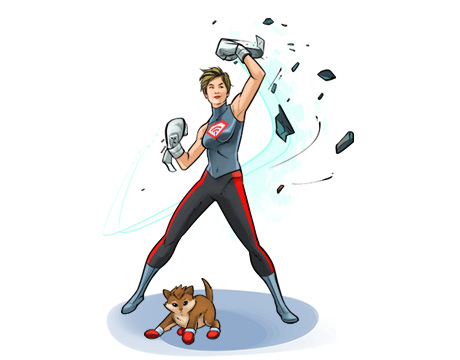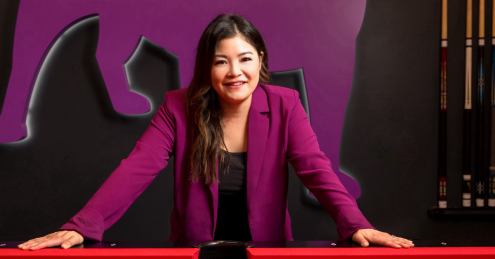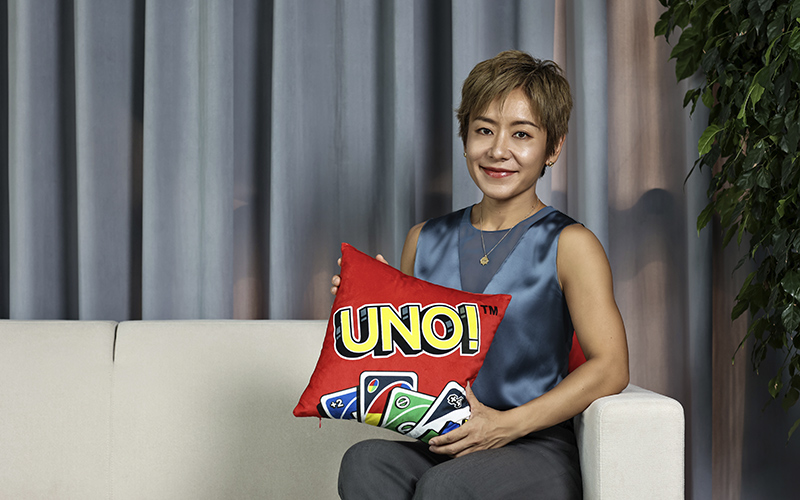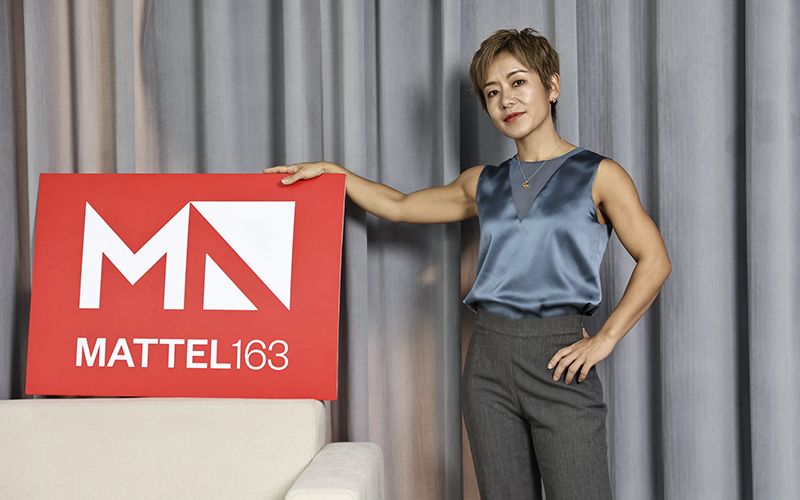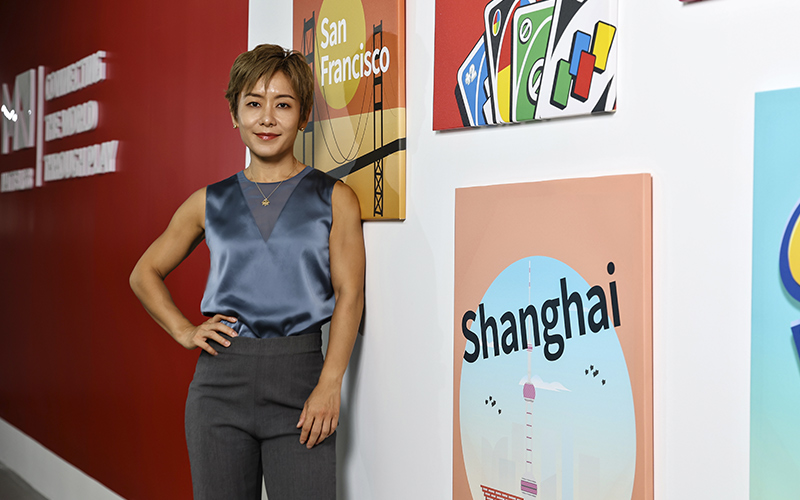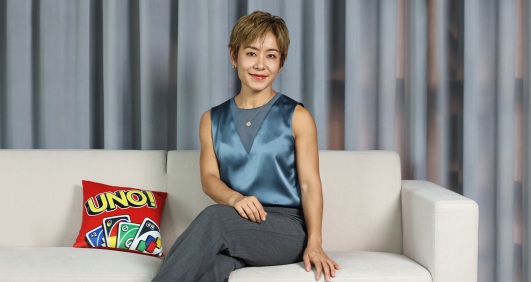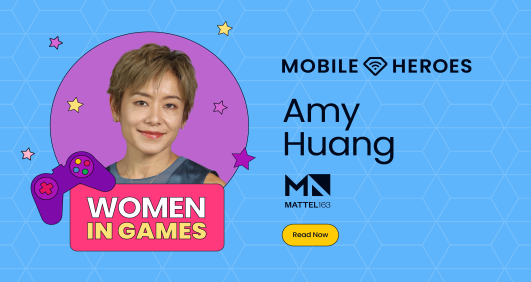Q&A with Amy
A seasoned internet and games industry executive, experienced in strategy, M&A, and operations with 20+ years of experience, Amy Huang is CEO of Mattel163. Mattel163 is a joint venture Amy helped to build with the backing of industry giants Mattel and NetEase. Under Amy’s leadership, Mattel163 is the name behind some of the highest-grossing and most engaging mobile games developed based on iconic IPs from Mattel and its own original IPs for a global audience.
Read Amy 's latest article: "Mattel163’s CEO Amy Huang on transforming classic brands into digital experiences"
Could you please tell us your working experience?
I started my career as a management consultant, then worked in e-commerce and investment before joining the games industry in 2012. In 2017, I facilitated the establishment of the strategic joint venture between the iconic toy company Mattel and Chinese internet giant NetEase. Through this, I founded Mattel163, a leading game studio creating highly engaging mobile games for a global audience. Since then, I’ve been the CEO of Mattel163.
Tell us why you chose to work in the mobile games industry?
Since joining NetEase Capital in 2012, I have invested in dozens of game projects, including top game start-ups and adtech companies across the US, Europe, and Asia. I think games are a huge part of our recreation and lives. They reflect culture and are highly shareable. A great game intellectual property (IP) can appeal across age groups, demographics and cultures, connecting people around the world to provide universal enjoyment. In this digital era, game entertainment is a core part of our daily lives. This is why the games industry is so attractive to me.
According to media coverage, the three mobile games released by Mattel163, UNO!™ Mobile and Phase 10: World Tour and Skip-Bo™ Mobile, achieved more than 250 million global players. What do you think is the competitive edge of Mattel163’s mobile games? What do you think Mattel163 has done right?
First, these three games are developed based on Mattel’s iconic IPs which are instantly recognizable for their positive brand culture, mature gameplay and huge fan bases. For example, UNO and Skip-Bo brands have been around for over half a century, so they were our best choices in the early stage of our company.
Our team tapped into the core gameplay and cultural values of the IPs, and then innovated the mobile games based on players’ playing patterns and preferences. They are mobile games that keep the classic gameplay while still providing a uniquely engaging and dynamic experience.
Moreover, we work with leading platforms for user acquisition and marketing to attract new players. The exploration and optimization of our monetization model (IAA + IAP) not only helps provide a positive user experience but also generates healthy revenue.
To develop casual games, Mattel163 has studied global markets and explored hybrid monetization. What do you think are key when exploring commercialization?
In general, user experience is the most important thing. Focus on making a fun and long-lasting game and plan for monetization. The monetization mechanism of Mattel163 is integrated with the gameplay, overall economy, and event designs for our mobile games.
For example, we had a clear direction for adopting a hybrid monetization strategy when we started to develop Phase 10: World Tour. We combined In-App Purchases (IAP) and In-App Advertisement (IAA), leaving space for UI design. This design combines the two business models (IAP + IAA) more reasonably and creates a smoother user experience. Then, keep testing and optimizing to explore new monetization opportunities.
Of course, choosing the right partner is crucial to monetization. Under hybrid monetization, IAA and IAP are equally important. Vungle has given us much support on monetization, especially when the team explored the monetization model of IAA + IAP in the early days.
After accumulating successful experiences, will Mattel163 explore other game genres in the future? What advice do you have for other game companies choosing a game genre?
The mission of Mattel163 is to connect the world through play. We are dedicated to bringing world-class entertainment experiences to a global audience. In addition to adapting games from beloved classics, we will bring our own original creations and provide more fun across various genres in the future.
After all, genre selection is for the long term. For game developers, choose the genre you are most passionate about or familiar with, study it deeply and innovate. Innovation doesn’t necessarily mean a total overhaul of current game experiences. You need to have a deep understanding of a specific genre, combine it with current trends and user insights to create a fresh experience.
What is the biggest challenge you have faced in terms of game launches or making casual games?
With a large user base and various gameplay, developing casual mobile games has both challenges and opportunities. The success of each of our mobile games is backed by holistic thinking and continuous optimization. Launching casual games is a systematic process that includes a long-term practice of understanding, knowing, and building trust with users in different markets.
More tailored game services in each region of the world will be crucial for casual games in the long term. There are more than 200 countries and regions worldwide, and players in each region have different habits and preferences. Although many people often tie Europe and North America together into one big region, the languages, holidays, humor and pop culture are different and nuanced.
From your experience, what can be done from the perspective of game development and marketing to increase the chance of making a successful mobile game?
Successful game development and marketing both come from putting users first. We integrate development and marketing of a game based on user experiences. This helps us ensure that new innovations will be welcomed by users.
Taking the designs of UNO! Mobile as an example, we found through preliminary surveys that both IP and non-IP users all love the PvP mode and the strategic fun in UNO! Mobile. As a result, we developed diverse gameplay in our mobile game. For marketing, we highlight the new gameplay modes, creating ads and social campaigns through different channels.
Recently, we introduced the UNO! Mobile Wildcard Series: All-Stars tournament where 16 star gamers battled for a gold UNO wildcard. Special rules and the 2v2 mode kept even the best esports players on their toes, such as esports icon CouRage and internet sensation LilyPichu. This shows that preliminary user studies are crucial. It’s also been phenomenal to see how people engage with our UNO! Mobile Wildcard Series tournament. By breaking into the esports space with the Wildcard Series, we are creating a more accessible competitive gaming culture for UNO!Mobile.
Have you ever seen a scenario where launched games don’t fit in a global market? Do you have any suggestions for it?
Games are a part of culture. This mismatch happens because of the cultural differences among users of varying markets. For example, an art style or IAP bundle that fits the Chinese market may not be received well by European players.
The key is to understand the experience and expectations of users in different markets and think about the cultural differences beforehand.
Before setting out to create any mobile games, run a feasibility test on the art style and gameplay. In the development phase, test and optimize the art, core gameplay, monetization model and so on. When it comes to marketing, consider the preferences of local users and the popularity of the game. Emphasize the game’s main features to create relatable marketing materials. Finally, conduct A/B tests and carefully select channels before releasing your ads.
In your view, what should the mobile industry focus on in the future? Does the game industry have any untapped potential globally?
In my eyes, games are about creating memorable experiences. The future of gaming depends on the content we create, and the potential hinges on the brand and its IPs. It’s obvious that teams who have succeeded in the industry focus on long-term achievements.
In addition, innovative technologies have opened up more possibilities for the industry, including how players will play games, how games will be operated and marketed and so on. For example, we are actively exploring the application of machine learning in UA and analysis of our various categories of users.
What do you think are some future trends for ad monetization and commercialization?
Online entertainment is one of the trends in development. Already, the first toy many kids own is digital. However, physical experiences will always exist in our lives. The future will be an integration of both online and offline experiences. Competitors that succeed at integration and offer great integrated experiences will be the future leaders.
How do you keep an eye on the market in an ever-evolving industry?
I always keep in mind why we started this company and what we want. Our focus is on connecting players worldwide and offering them top game experiences. We pay attention to technological changes because we want to offer a better user experience with more effective technologies. That’s why we update our content constantly to reflect new industry changes.
With more intense competition in the overseas game industry, how can Mobile Heroes and their teams maintain a competitive edge?
First, gain a deeper understanding of your players. A solid understanding of the local culture and users is the foundation of all game development, from concept design and in-game art to gameplay and live op events.
Secondly, constantly innovate. Innovate by studying game genres and gameplay. Ensure that designs are integrated into product development and long-term operations.
Third, respond to the market flexibly. Pay attention to the changes in business, technologies, users, creative ideas & traffic platforms, and evolve with them.


